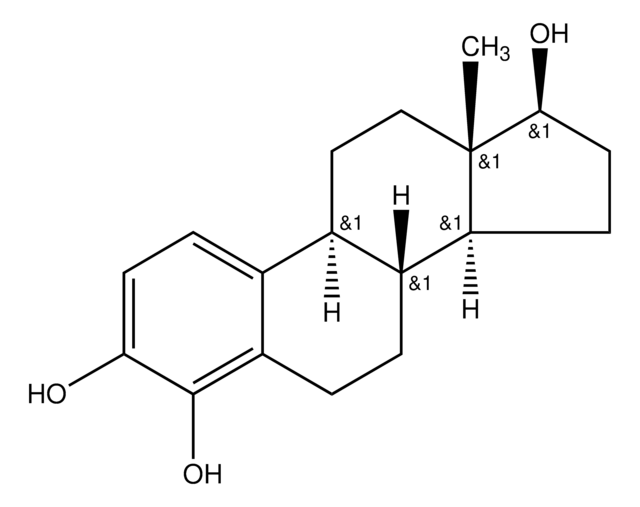H6012
4-Hydroxyestrone
≥90% (HPLC)
Synonym(s):
1,3,5(10)-Estratriene-3,4-diol-17-one
About This Item
Recommended Products
sterility
non-sterile
Assay
≥90% (HPLC)
form
powder
solubility
methanol: 10 mg/mL, clear, colorless to faintly brownish-yellow
shipped in
ambient
storage temp.
−20°C
SMILES string
[H][C@]12CC[C@]3(C)C(=O)CC[C@@]3([H])[C@]1([H])CCc4c(O)c(O)ccc24
InChI
1S/C18H22O3/c1-18-9-8-11-10-4-6-15(19)17(21)13(10)3-2-12(11)14(18)5-7-16(18)20/h4,6,11-12,14,19,21H,2-3,5,7-9H2,1H3/t11-,12-,14+,18+/m1/s1
InChI key
XQZVQQZZOVBNLU-QDTBLXIISA-N
Biochem/physiol Actions
Storage Class Code
11 - Combustible Solids
WGK
WGK 3
Flash Point(F)
199.9 °F - closed cup
Flash Point(C)
93.3 °C - closed cup
Personal Protective Equipment
Certificates of Analysis (COA)
Search for Certificates of Analysis (COA) by entering the products Lot/Batch Number. Lot and Batch Numbers can be found on a product’s label following the words ‘Lot’ or ‘Batch’.
Already Own This Product?
Find documentation for the products that you have recently purchased in the Document Library.
Our team of scientists has experience in all areas of research including Life Science, Material Science, Chemical Synthesis, Chromatography, Analytical and many others.
Contact Technical Service







